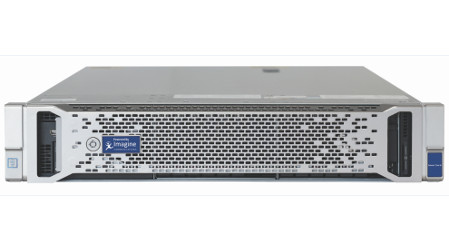NAB Show: Imagine Helps Broadcasters Go From ‘When’ to ‘Now’
LAS VEGAS—While few doubt that the next-generation technologies dominating today’s discussion—from the cloud to the ATSC 3.0 broadcast standard—are part of broadcasting’s future, it’s harder to answer the questions of “when” and “how.”
Because when it comes to the transition to IP, the cloud and virtualization, “there’s no question of ‘when’ will they be adopted, but rather that they are happening,” said Glodina Connan-Lostanlen, chief marketing officer of Dallas-based Imagine Communications.

Selenio One
Imagine will come to the 2017 NAB Show to showcase a potential roadmap for broadcasters looking to navigate these various transitions. The goal is to clearly explain and clarify how these transformative processes can be managed technically, and what the real-world benefits are for broadcasters.
“On one hand, it’s here. You can implement this technology today,” Connan-Lostanlen said. But for facilities operating in the still-well-functioning world of an SDI infrastructure, making the flip takes a concerted plan of action.
Often times, it’s an issue of cultural change as much as it is about technology revamps.
Engineers need to be relevant with new skills in the IT world, Connan-Lostanlen said, “but it’s not going to be a one-or-the other scenario; we’re going to live in a hybrid world.”
CHANGE MANAGEMENT
More and more, companies need to look at how their so-called change management process works and how these technologies can be positively adapted, she said.
For broadcasters, the transition to an IP-based facility needs to be about continuing education, including conversations about native vs. enabled cloud solutions. “We have built solutions that are natively cloud ready so they will take advantage of the cloud’s scalability,” she said.
The company will also focus on the ways in which broadcasters are investing and working to stay relevant and invested in OTT.
The other trend making headlines before the NAB Show is the greenlight the industry has on adoption and implementation of ATSC 3.0 next-gen technology. This is a vital and exciting step for broadcasters, Connan-Lostanlen said. “They need to make sure from an end-to-end standpoint they can monetize IP bandwidth that is open to traditional broadcasters looking to localize content.”
“All the major groups stations in North America are looking at this as their opportunity to play against new media and pure-play OTT entrants,” she said. “This technology offers a new chance for broadcasters to stay relevant and to maximize their existing content.”
The company also has an eye on workflow issues in the ad space. Imagine will show technologies that look at the monetization process as it relates to a content delivery network ecosystem and connects with dynamic ad insertion. “[We’ll be talking about] how all these come together in lots of different ways and [how that impacts] the way one designs their business model,” she said. “It’s about connecting the dots between advertising and distribution. What we want to try and do more of is share use cases and real-life information about customers that are trying to implement those solutions, and how to take the benefit from them.”
CLOUD UPDATES
The company will also show a series of cloud solutions as well as new features within its Selenio One transcoding platform.
Imagine also plans to talk about the industry’s ongoing advances when it comes to interoperability and standards, particularly for true UHD IP production solutions for live content. The company is a member of the Alliance for IP Media Solutions standards body, which is working on interoperability for the SMPTE 2110 standard for the transport of video and audio over IP networks.
Imagine will also highlight the rollout of a new production vehicle for a Swiss broadcast service provider that the company says is the first of its kind to support uncompressed IP UHD production capabilities using the SMPTE ST 2110 standard. The new vehicle, for provider tpc based in Zürich, will allow the broadcaster to monitor signals of a large number of dedicated screens, with inputs and monitor outputs all in IP.
Imagine will also tease a new as-yet-unnamed product that addresses the processing of uncompressed UHD.
Imagine will be in booth SL1516.
Get the TV Tech Newsletter
The professional video industry's #1 source for news, trends and product and tech information. Sign up below.
Susan Ashworth is the former editor of TV Technology. In addition to her work covering the broadcast television industry, she has served as editor of two housing finance magazines and written about topics as varied as education, radio, chess, music and sports. Outside of her life as a writer, she recently served as president of a local nonprofit organization supporting girls in baseball.

